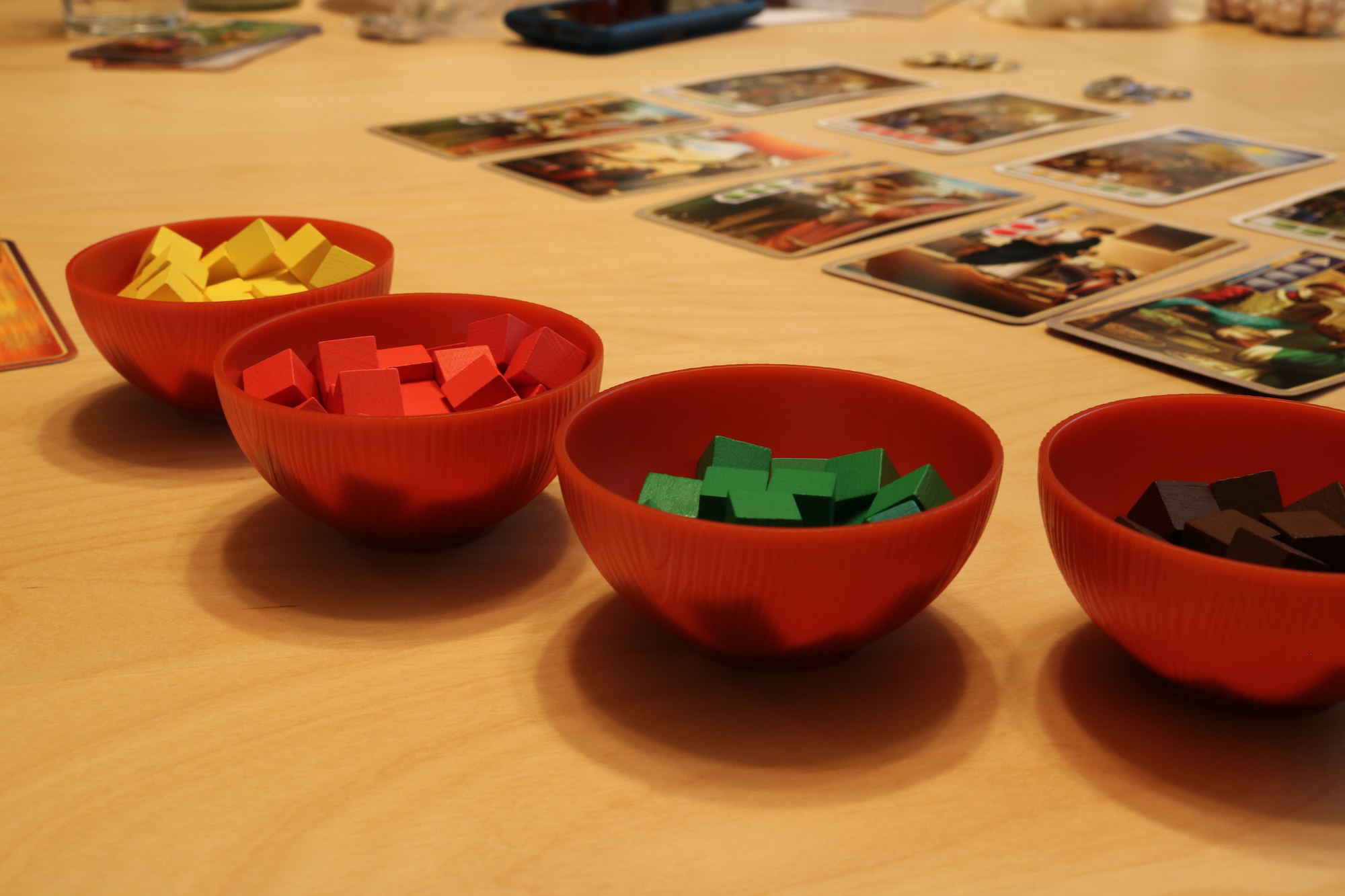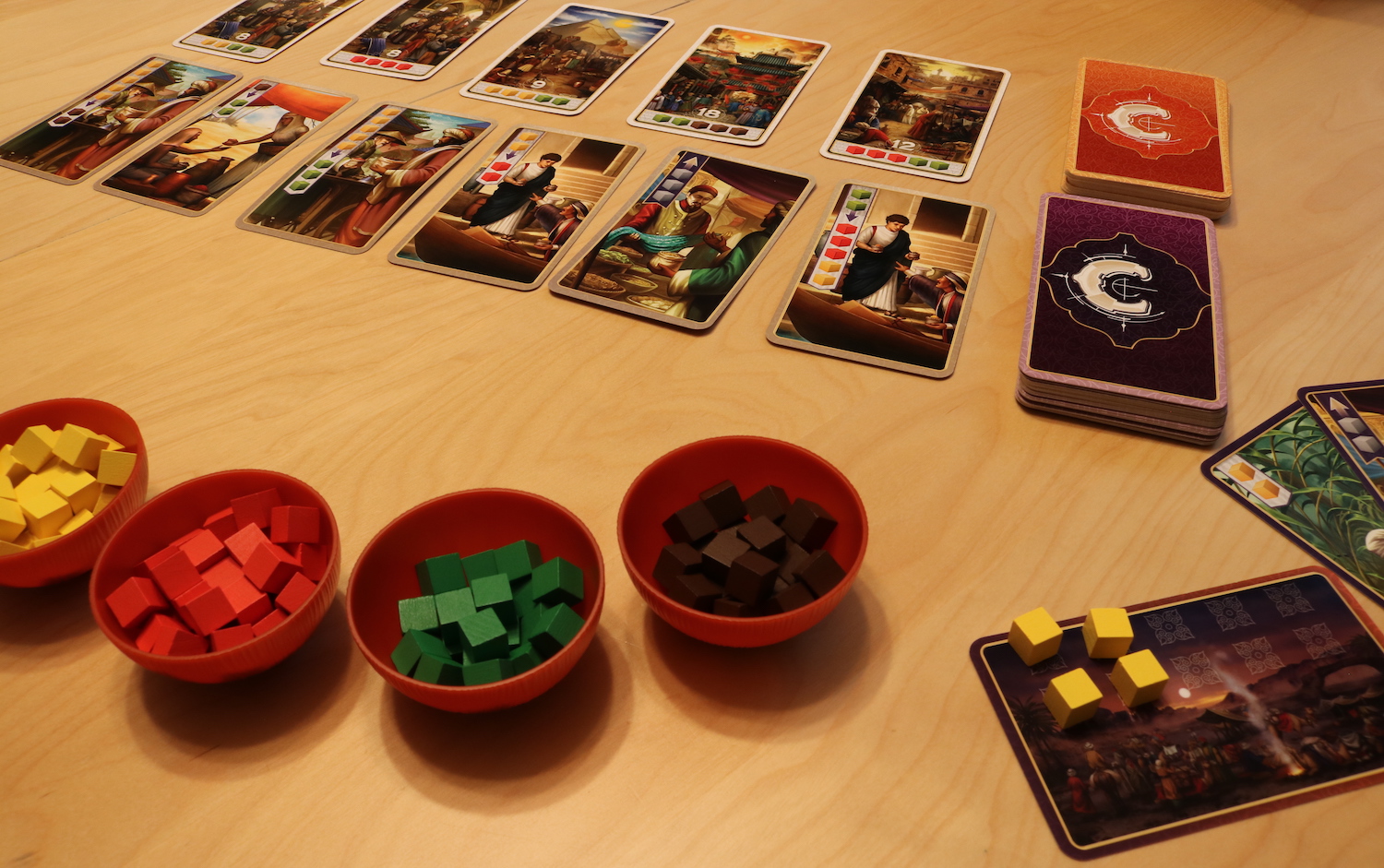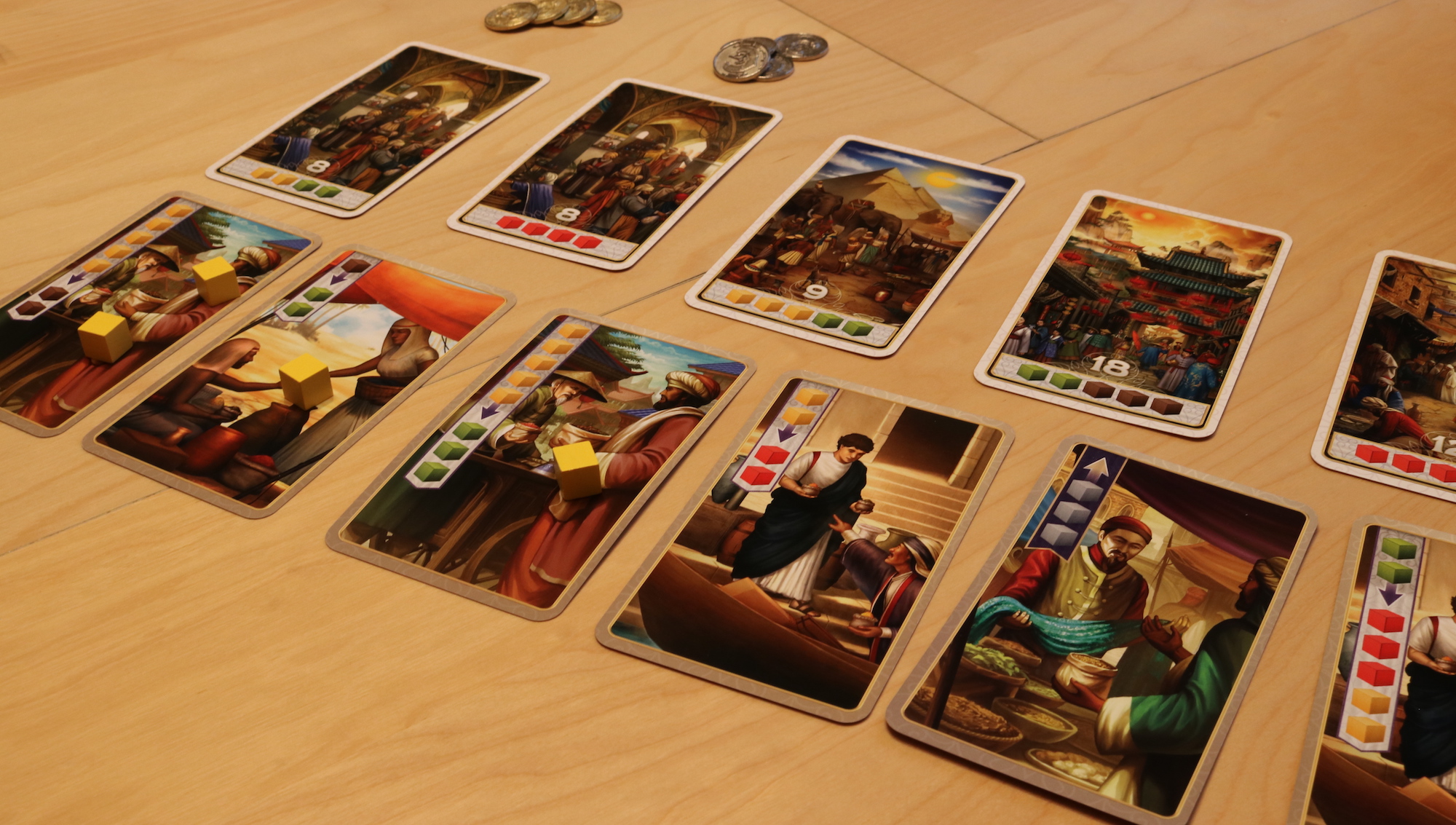A panini review is one in which a game is reviewed in the 2 player context (i.e. the 2 players are 2 pieces of toasted bread and the game is the filling)! Will pause for groans now.
Century: Spice Road is a card drafting game about trading spices for 2-5 players. Along with Unearth, this is one of the first card drafting games we have played since rekindling our interest in board games, and the bottom line is that it's a nice little game. It hasn't changed our lives, but it has some features that have come together to actually make it one of our most played games recently.

As mentioned in our 'About Us' page, one of the features we love in a game is low inertia to start playing. This game has a limited number of components and fairly straightforward rules (they all fit on a single sheet of paper!) and so we were playing our first game within 5 minutes of opening the box. Now that we know the rules, set up takes about 2 minutes, and clean up about the same.

The game itself is extremely simple. Each turn you can pick up a merchant card, buy a contract by paying its cost in spices, or play a merchant card (thereby discarding it), or pick up all your discarded merchant cards. Merchant cards can give you trades (such as 2 cardamom cubes for 3 saffron and 2 turmeric cubes) or harvest some number of a spice, or upgrade some number of spices (yellow to red, red to green, green to brown).
Depending on the mood of the group, the game can move at quite a brisk pace, or can be more ponderous if players spend longer considering their opponent's progress and how best to thwart them. One thing we have noticed about this game with 2 players is that the desirability of the initial Merchant cards can vary quite a bit. If the initial cards laid out aren't appealing, we can spend an entire game drawing very few cards - or, conversely, if every card that comes off the top of the deck is amazing, we are frantically racing to hoard them all. We've experienced both situations, and expect the effect would be limited in a larger group because there would be more turnover of the cards in general. While the result is an inconsistent experience, it is nice to have more variety.
You are always invested in what's happening in Spice Road. You're constantly eyeing your competition trying to figure out what contract they're going for, either cutting them off or changing your plans if they're closer. Every time you pick up a merchant card along the board you have to drop a spice on each one to its left, and if you pick up a card with spices on it, they are yours! Befitting its theme, you generate a network of merchants that lets you convert your lowly turmeric harvest into a cornucopia of cardamom, cinnamon, and saffron with your particular combination of merchants. Or occasionally a high value card will pop up that you can't easily generate, leaving you to hunt through the merchant options for something that may help.

There isn't too much direct competition, you can only block your opponent by taking a merchant or contract instead. You'll occasionally hear an outburst as you get to a contract before your opponent, or a cackle as they pick up a merchant that you've dropped 3 spices on but otherwise it's a race to the finish line. Each turn you rest or only harvest two turmeric can feel like a waste as you see your opponent building up their cinnamon stock.
As far as the actual components of the game, they're adequate but not particularly inspiring. The little wooden cubes and the bowls to store them in are fun, and the insert does a nice job holding all of these parts - we don't generally sleeve our cards, and haven't made the effort for this game, so we can't comment on how the insert does with holding sleeved cards. The cards are tarot sized and have a good weight to them, but the art is a bit bland. However, the bright colors are still pleasing to the eye and once the game got going, the artwork didn't seem as important. There's a special mat designed to be a surface to play on, but the retail price of $30 seems a little excessive as it essentially doubles the price of the game.
One of the criticisms lodged against Century: Spice Roads relates to the designer's ambition to produce a series of 3 games, all of which are related in theme and which can be combined to produce a larger, more complicated game. The second of these games, Century: Eastern Wonders, has already been released, and the combination of these 2 games creates Century: Sand to Sea. The third game in the series is titled Century: A New World, and has not been released yet. Based on reviews we have seen, we plan to purchase Eastern Wonders, but have not yet done so. Shut up and Sit Down has noted that when combined, the bowls and spice tokens are duplicated as one set is superfluous; when paying twice the price to acquire the 2 games, in part to acquire unnecessary components, Sand to Sea may seem like an overly pricey investment. This makes sense to us, but we still want to try it out for ourselves and see what we think about the game play experience, especially because we enjoy Spice Road on its own.
Spice Road has a bit of a cap on strategy. The early game merchant pickups feel the most impactful and the rest can be a bit of a race. Luckily with 2 players the games can go pretty quick so you can easily play a couple games in a row to build a couple of different hands of merchants.
The bottom line is, we like this game. The mechanisms are a bit simplistic, but this can be nice sometimes - our favorite use of this game so far has been something to play while we listen to Harry Potter on audiobooks! It also seems like it would be a great travel game with the minimal setup, although it's not the most space efficient. As far as replayability, we can see how it might get boring with 2 people, but expect this may change depending on how Sand to Sea plays. We also haven't played some of the games this one is frequently compared to, such as Splendor. However, with those caveats, we think Spice Road is worth it, especially if you snag it on sale.
